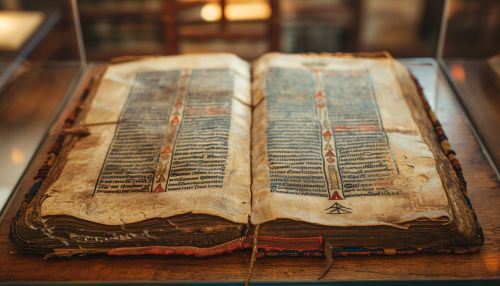Gospel of Luke
Introduction
The Gospel of Luke is the third book in the New Testament of the Christian Bible. It is believed to have been written by Luke the Evangelist, a companion of the Apostle Paul. The gospel presents a narrative account of the life, death, and resurrection of Jesus Christ, and is unique in its emphasis on Jesus' compassion towards the poor, the marginalized, and sinners.


Authorship and Date
The Gospel of Luke does not explicitly state its author, but the traditional view attributes it to Luke the Evangelist, a physician and companion of the Apostle Paul. This attribution is based on textual similarities between this gospel and the Acts of the Apostles, which are believed to have been written by the same author. Most scholars date the gospel to around 80-90 AD, although some propose earlier or later dates.
Content and Structure
The Gospel of Luke is composed of 24 chapters and is the longest of the four gospels. It begins with a prologue addressed to a certain Theophilus, and then proceeds to narrate the events of Jesus' life in a roughly chronological order. The gospel can be divided into several sections:
- The Infancy Narrative (Luke 1-2)
- The Ministry in Galilee (Luke 3-9)
- The Journey to Jerusalem (Luke 9-19)
- The Passion Narrative (Luke 19-23)
- The Resurrection (Luke 24)
The Infancy Narrative
The Gospel of Luke is the only gospel that provides a detailed account of Jesus' birth and childhood. It begins with the annunciation of the birth of John the Baptist to his father Zechariah, and the subsequent annunciation of Jesus' birth to his mother Mary by the angel Gabriel. The narrative includes the famous account of Jesus' birth in Bethlehem, the visit of the shepherds, and the presentation of Jesus in the Temple.
The Ministry in Galilee
This section of the gospel covers Jesus' public ministry in the region of Galilee. It includes the baptism of Jesus by John the Baptist, the temptation of Jesus in the wilderness, and the beginning of Jesus' ministry in Nazareth. This section also includes many of Jesus' teachings and miracles, such as the Sermon on the Plain and the feeding of the five thousand.
The Journey to Jerusalem
This section narrates Jesus' journey to Jerusalem, during which he continues to teach and perform miracles. It includes the parables of the Good Samaritan and the Prodigal Son, among others. This section also includes Jesus' transfiguration on the mountain and his prediction of his own death and resurrection.
The Passion Narrative
The Passion narrative in the Gospel of Luke details the events of Jesus' final week in Jerusalem. It includes the Last Supper, Jesus' arrest, trial, crucifixion, and death. The narrative emphasizes Jesus' innocence and his forgiveness towards those who crucified him.
The Resurrection
The final chapter of the Gospel of Luke narrates the resurrection of Jesus. It includes the discovery of the empty tomb by the women, the appearance of Jesus to the disciples on the road to Emmaus, and his final appearance to the disciples in Jerusalem before his ascension into heaven.
Theology
The Gospel of Luke presents a unique theological perspective among the four gospels. It emphasizes Jesus' compassion and concern for the poor, the marginalized, and sinners. It also highlights the role of the Holy Spirit and the importance of prayer in Jesus' life and ministry. The gospel presents Jesus as the Savior not only of the Jews, but of all humanity.
Historical and Cultural Context
The Gospel of Luke was written in a context of significant political and religious upheaval. The destruction of the Jerusalem Temple in 70 AD and the ongoing tensions between Jews and Romans likely influenced the gospel's emphasis on peace, forgiveness, and universal salvation.
